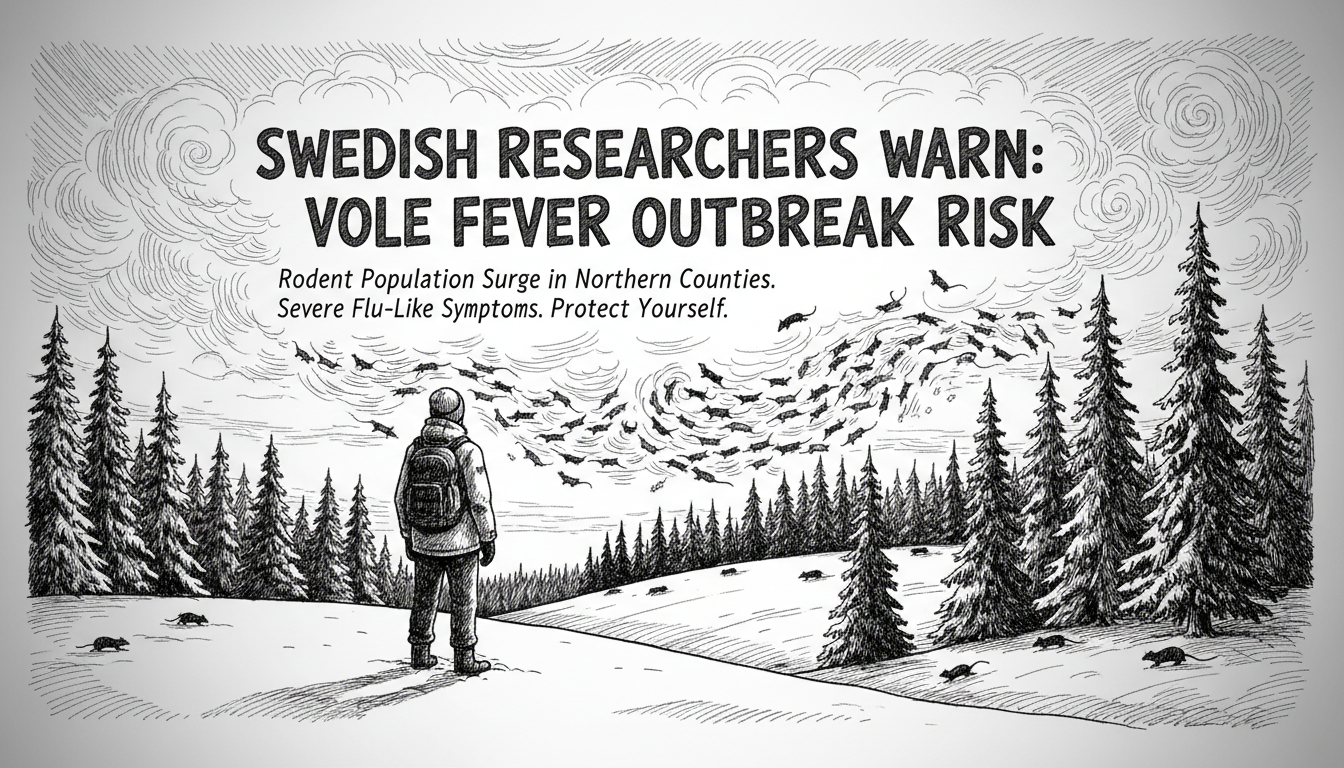Swedish agricultural scientists have issued a stark warning about rising vole fever risks as rodent populations surge in northern regions. Researchers from the Swedish University of Agricultural Sciences documented significant population growth in Västerbotten county, creating ideal conditions for disease transmission. This development requires attention from both public health officials and citizens across Sweden.
The Swedish government typically monitors such health threats through its public health agencies. While no specific Riksdag decisions have addressed this outbreak yet, previous parliamentary actions on zoonotic diseases demonstrate how Stockholm politics handles emerging health crises. Government policy Sweden has historically prioritized preventive measures during similar situations.
Professor Frauke Ecke explained the timing of their alert. 'The vole population increase occurred earlier this season,' Ecke stated. 'We observe a several-week delay before human cases appear, so we issue warnings now to encourage public caution and healthcare preparedness.' This proactive approach reflects standard Swedish public health protocols.
Vole fever typically causes influenza-like symptoms including high fever, headaches, muscle pain and fatigue. Some patients experience nausea and back or abdominal discomfort. Kidney complications can develop in severe cases, sometimes requiring hospital care for fluid and electrolyte balance management.
Historical context reveals this isn't Sweden's first encounter with the disease. The last major outbreak occurred seventeen years ago, when over 2,000 people sought medical treatment. Nearly ninety percent of those cases originated in Sweden's northernmost counties, highlighting the disease's geographic concentration.
Western Sweden remains relatively unaffected according to infection control physician Thomas Wahlberg. 'Only ten cases have been reported in Västra Götaland region during the past decade,' Wahlberg confirmed. 'Just two cases might have originated locally, as people often contract the infection elsewhere but develop symptoms after returning home.'
The disease typically resolves within one to two weeks without intervention, though fatigue can persist for several additional weeks. Positive aspects include no human-to-human transmission and lasting immunity after initial infection.
Protection guidelines emphasize practical measures. Residents should rodent-proof buildings by sealing entry points and installing metal mesh on vents. Cleaning requires wet-wiping rather than sweeping or vacuuming to avoid aerosolizing virus particles. Gloves are essential when handling voles or their waste, and respiratory protection can help during high-exposure activities like wood collection.
Outdoor precautions include avoiding dry grass disturbance and timing yard work shortly after rainfall when virus particles remain settled. These recommendations apply even to western residents who travel north, as summer home owners and visitors face exposure risks.
This situation demonstrates how environmental factors directly impact public health in Sweden. The Swedish Parliament may need to consider updated wildlife management strategies as part of broader government policy Sweden developments. Current responses rely on existing public health infrastructure, but sustained population growth could require additional resources from Stockholm politics decision-makers.

